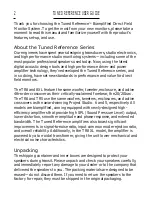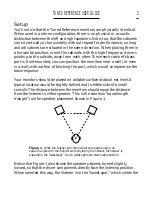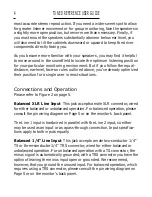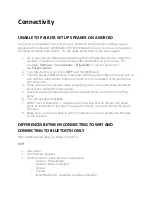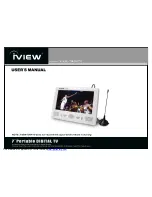
most accurate stereo reproduction. If you need a wider sweet spot to allow
for greater listener movement or for group monitoring, face the speakers in
a slightly more open position, but never more than necessary. Finally, if
you must mount the speakers substantially above or below ear level, you
will also need to tilt the cabinets downward or upward to keep the driver
components directly facing you.
As you become more familiar with your speakers, you may find it helpful
to move around in the soundfield to locate the optimum listening position
for your particular monitoring environment. But if you follow the equal-
distance, ear-level, face-on rules outlined above, you’ve already optimized
their position for a single user in most situations.
Connections and Operation
Please refer to Figure 2 on page 5.
Balanced XLR Line Input This jack accepts a male XLR connector, wired
for either balanced or unbalanced operation. For balanced operation, please
consult the pin wiring diagram on Page 5 or on the monitor’s back panel.
The Line 1 input is hardwired in parallel with the Line 2 input, so either
may be used as an input or as a pass-through connection. Input specifica-
tions apply to both inputs equally.
Balanced 1/4" Line Input This jack accepts a male two-conductor 1/4"
TS or three-conductor 1/4" TRS connector, wired for either balanced or
unbalanced operation. For unbalanced operation with a TS connector, the
minus signal is automatically grounded; with a TRS connector you have the
option of leaving the minus input open or grounded. We recommend,
however, that you ground the unused input. For balanced operation, which
requires using a TRS connector, please consult the pin wiring diagram on
Page 5 or on the monitor’s back panel.
TUNED REFERENCE USER GUIDE
4
Summary of Contents for Biamplified Direct Field Monitor System
Page 1: ...USER GUIDE ...


